The Story Of ‘Vasa,’ The Epic 17th-Century Swedish Warship That Sank 20 Minutes Into Her Voyage
Vasa is a Swedish warship built between 1626 and 1628. Its rather peculiar story has gone down in history: despite being one of the Swedish navy’s biggest achievements and among the most spectacular warships ever built, Vasa sank within twenty minutes of setting sail, just 1,300 m (1,400 yd) into her maiden voyage on 10 August 1628.
“The warship survived the first blast of wind it encountered on its maiden voyage in Stockholm Harbor,” writes Lucas Laursen for Archaeology. “But the second gust did it in. The sinking of Vasa took place nowhere near an enemy. In fact, it sank in full view of a horrified public, assembled to see off their navy’s – and Europe’s – most ambitious warship to date.”
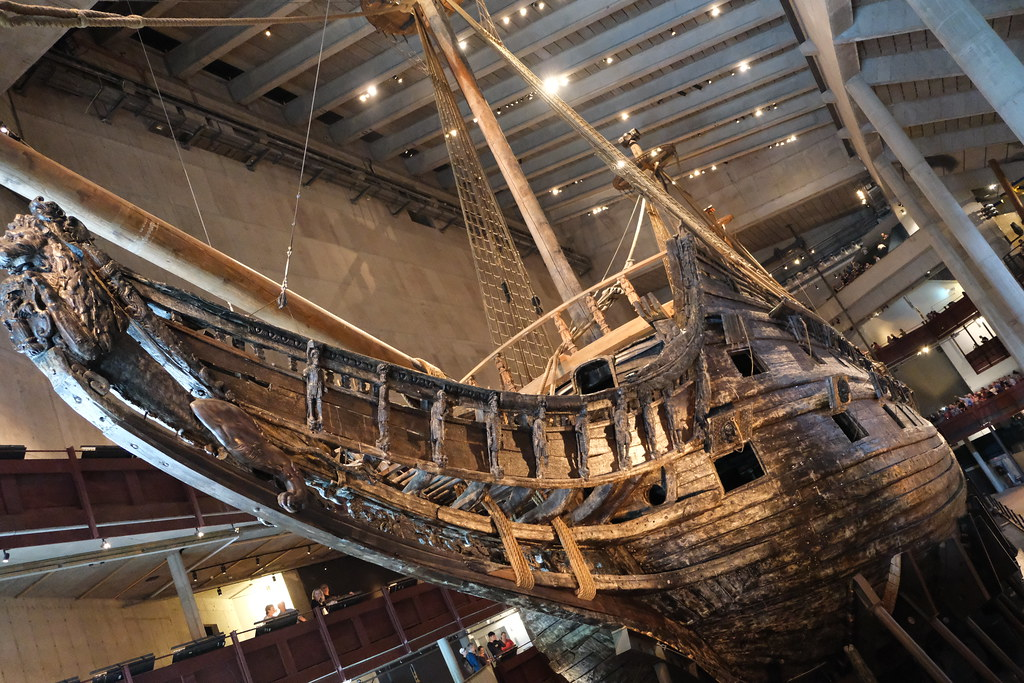
Vasa floundered because of engineering problems – but this PR disaster for the Swedish navy has become a boon for archaeologists.
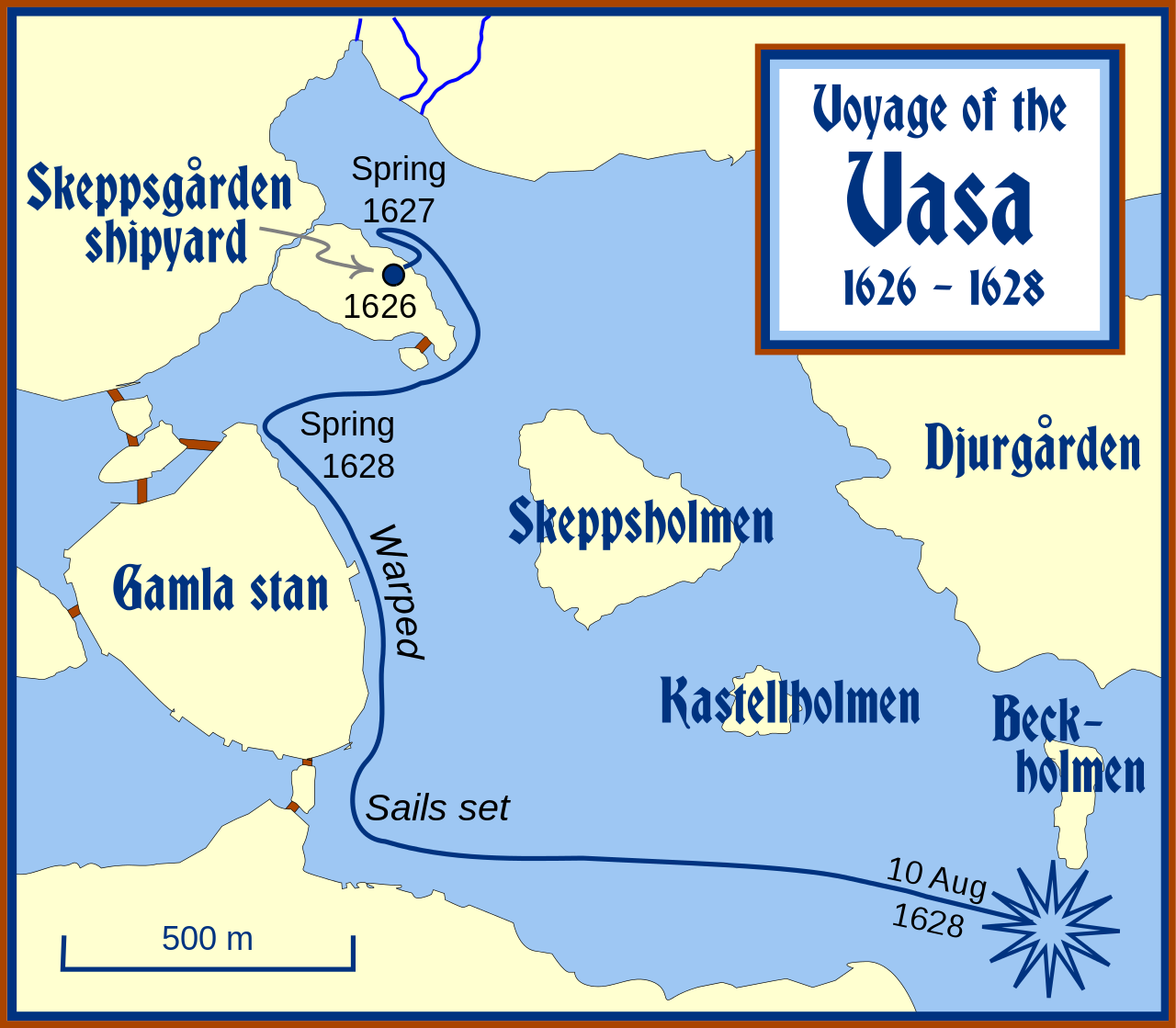
Central Stockholm and the movements of Vasa from Skeppsgården (‘navy yard’) to the anchoring place near the old royal castle where it was fitted and armed in the spring of 1628, and finally the location where it foundered and sank. Image credit: MapMaster
Vasa was a huge, beautifully decorated ship. Constructed at the navy yard in Stockholm, she was covered in elaborate wooden carvings that told stories about the Swedish royal family, and most importantly the king, Gustav II Adolf, who ordered her construction to signal to the world the superiority of the Swedish empire.
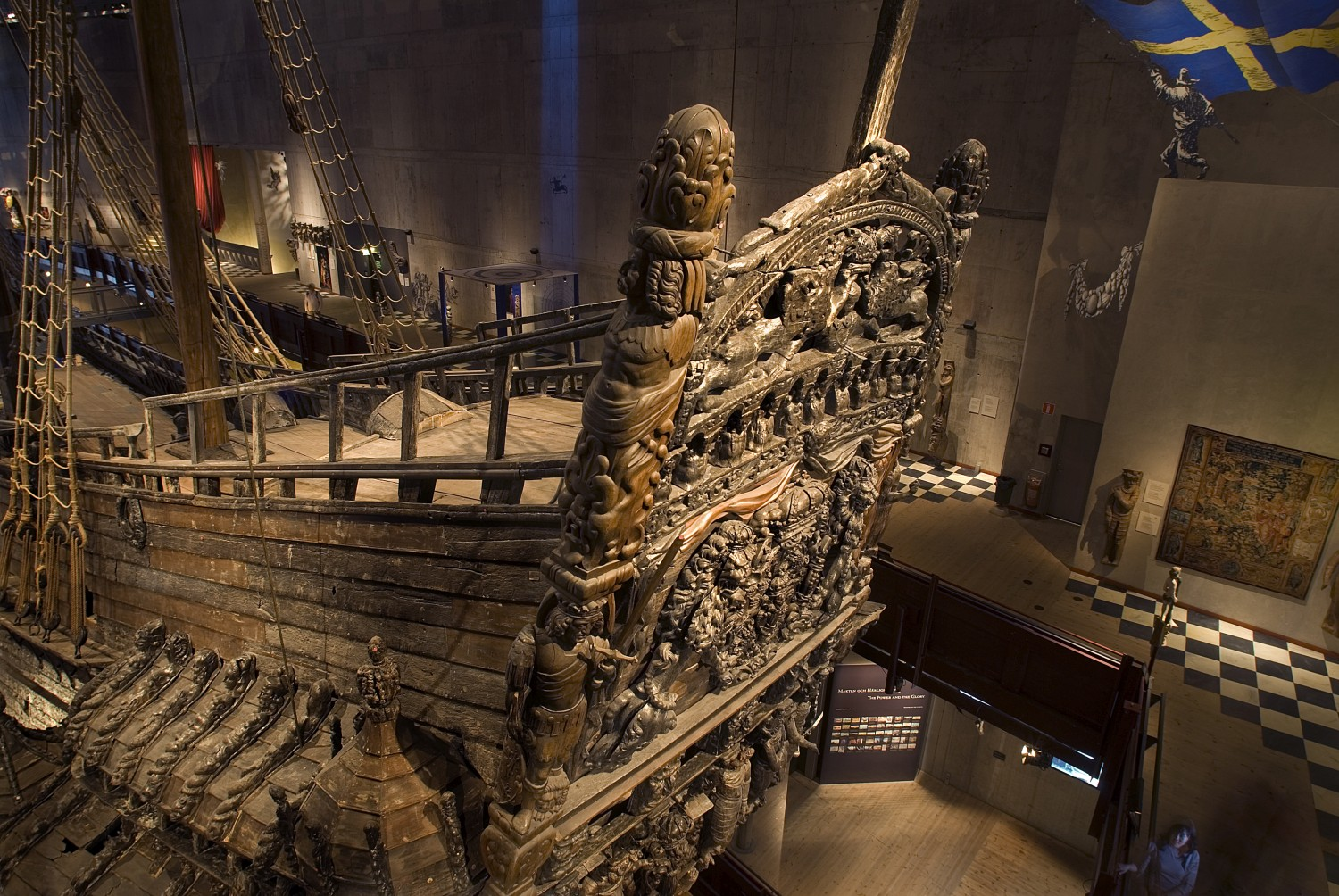
The uppermost part of the ship Vasa’s stern. Photo: Karolina Kristensson, the Vasa Museum/SMTM.
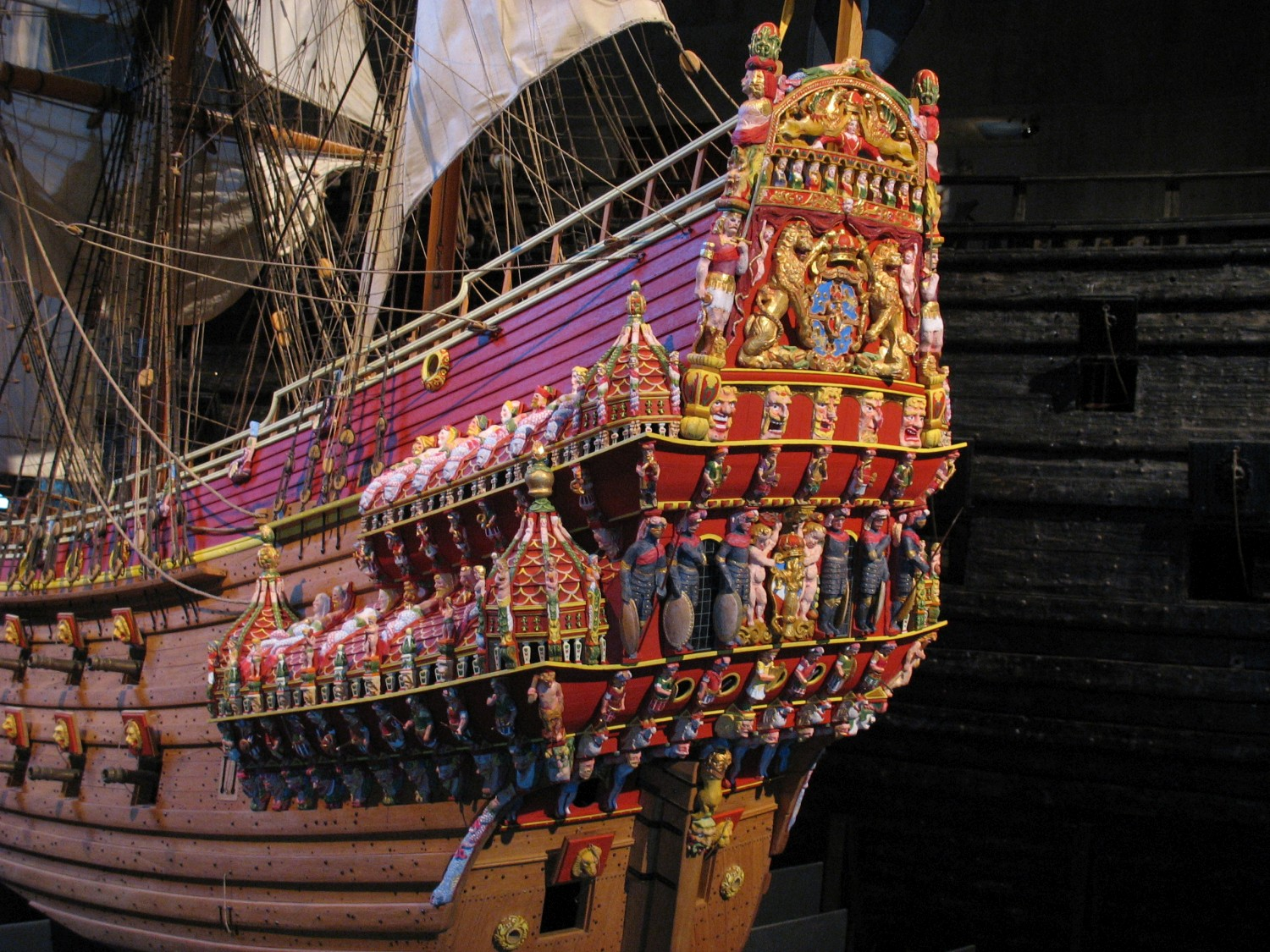
A 1:10 scale model of the ship on display at the Vasa Museum. The sculptures are painted in what are believed to be the original colors. Photo: Peter Isotalo
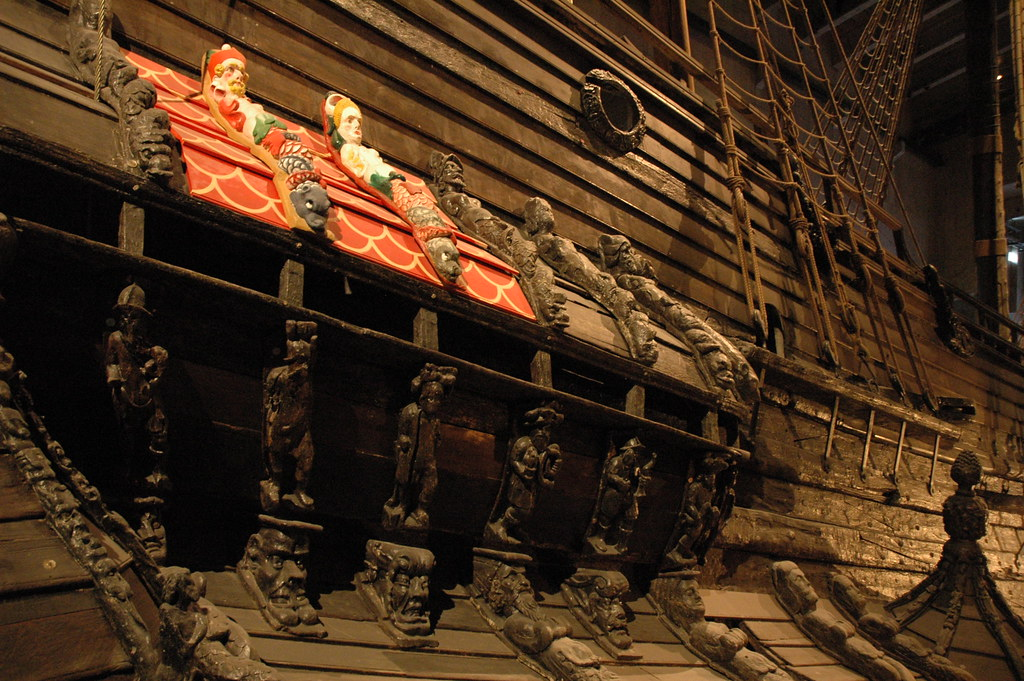
A small part of the ship has been repainted to look like on the day of departure. Photo: kyriazis
Upon completion, Vasa was one of the most powerfully armed vessels in the world. However, she was dangerously unstable, with too much weight in the upper structure of the hull.
Despite this lack of stability, she was ordered to sea and foundered only a few minutes after encountering a wind stronger than a breeze.
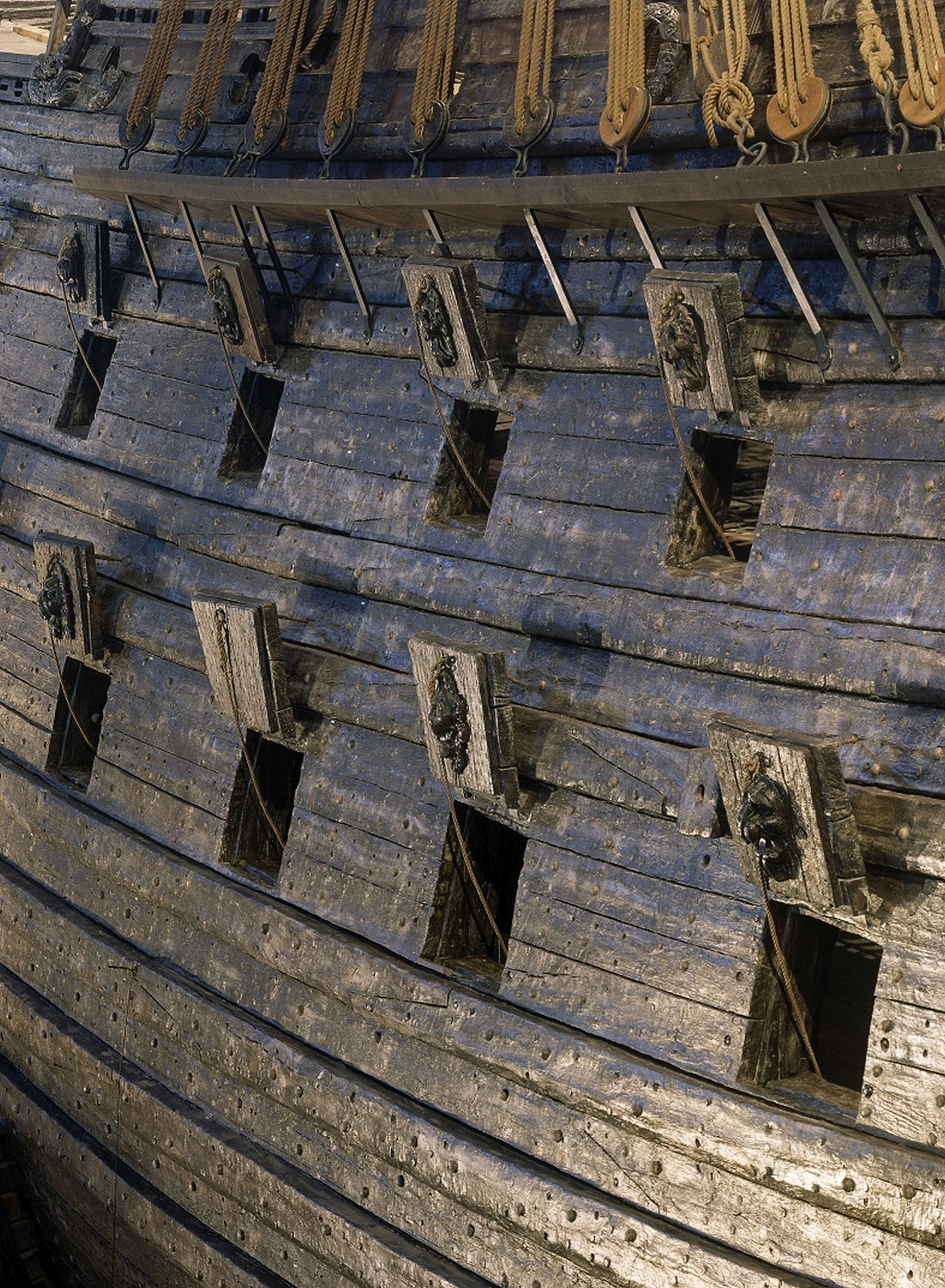
The gun ports of the ‘Vasa’. When sailing on its maiden journey the lower gun ports were open, as they had fired a salute, and a gust of wind tilted the ship so that water flowed into the interior of the ship. Photo: Åke E:son Lindman.
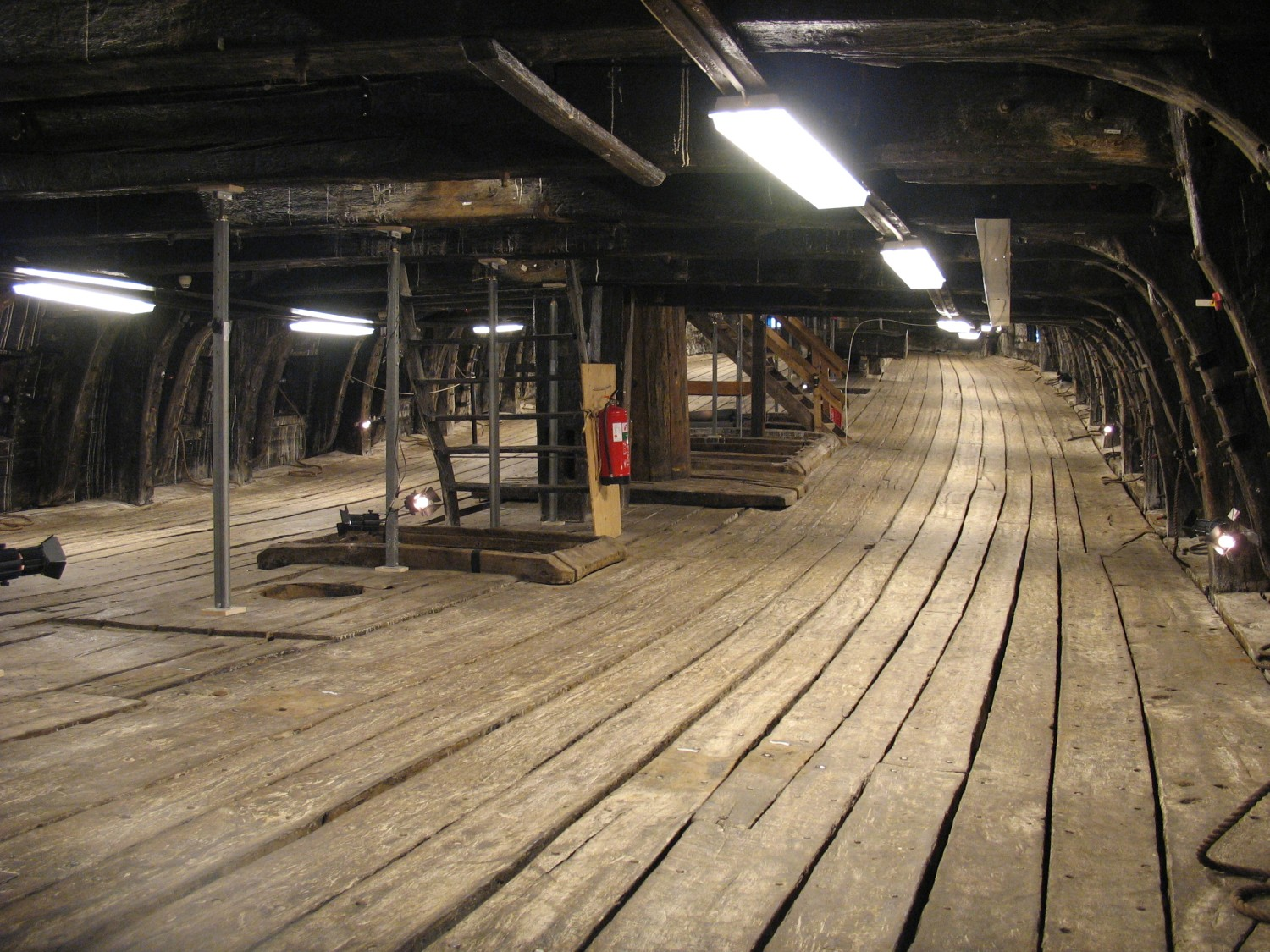
The lower gun deck of the warship Vasa, displayed in the Vasa Museum in Stockholm, Sweden. Picture taken inside the ship looking forward. Photo: Peter Isotalo
Although Vasa didn’t work out well for Gustav II Adolf, it’s become a boon for archaeologists.
“The cold, oxygen-poor water of the Baltic Sea protected Vasa from the bacteria and worms that usually digest wooden wrecks,” writes Lucas Laursen for Archaeology. “Perhaps 95 percent of Vasa’s wood was intact when Sweden finally raised the wreck in 1961.”
Vasa was recovered from the sea in 1961, with thousands of artifacts and the remains of at least 15 people found in and around the ship’s hull by marine archaeologists. It is currently on display in the Vasa Museum in Stockholm.
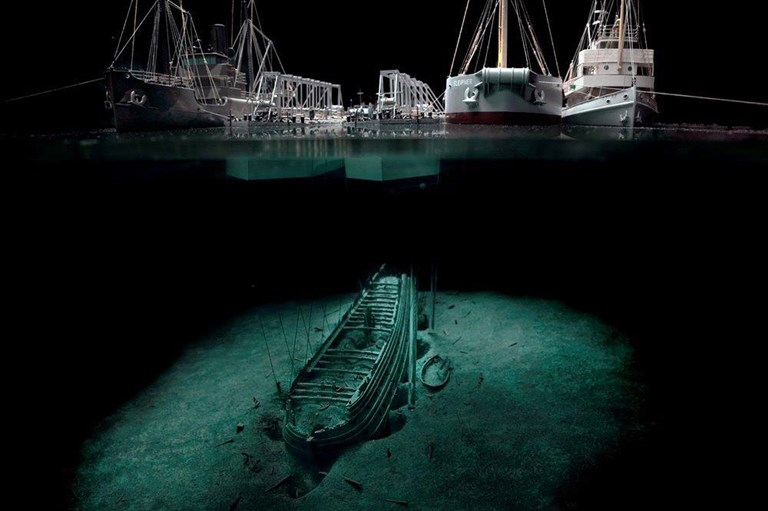
A model showing how Vasa could be salvaged with steel cables and floating pontoons. Photo: Johan Bergling, National Maritime Museums
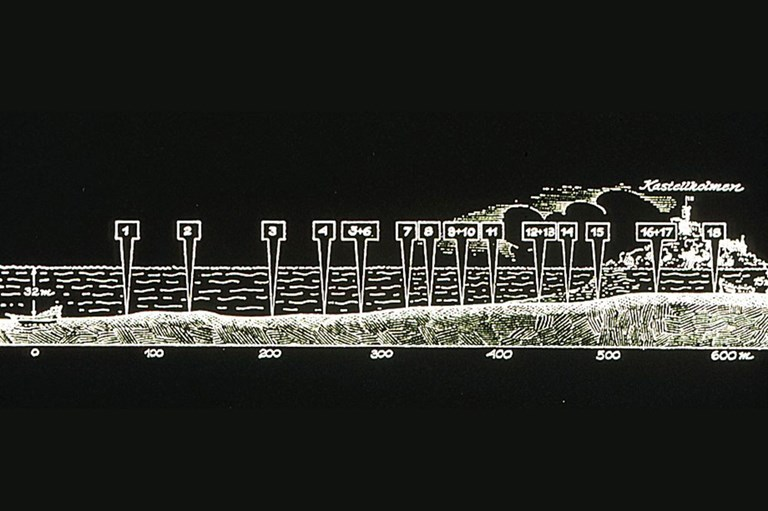
Sketch of how Vasa was moved from the wreck site to finally be salvaged outside of Kastellholmen. Author: Unknown
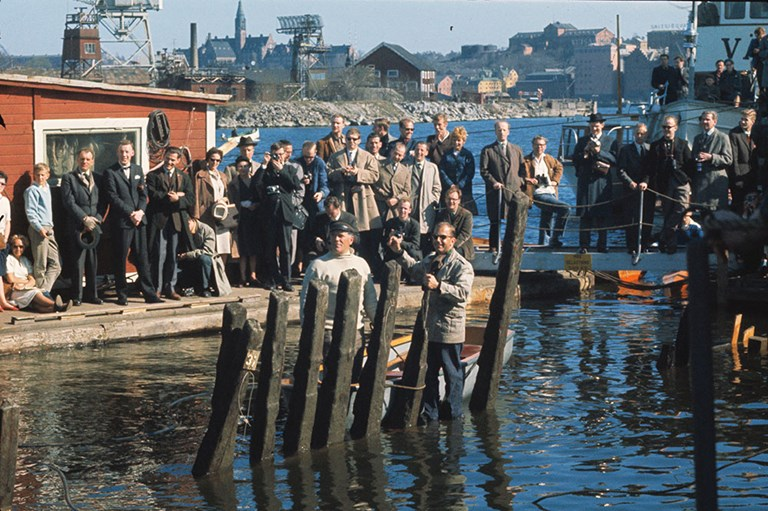
Vasa finally comes to the surface, 1961. Image credit: Vasa Museum
Among the many items found were clothing, weapons, cannons, tools, coins, cutlery, food, drink and six of the ten sails.
The artifacts and the ship herself have provided scholars with invaluable insights into details of naval warfare, shipbuilding techniques and everyday life in early 17th-century Sweden.
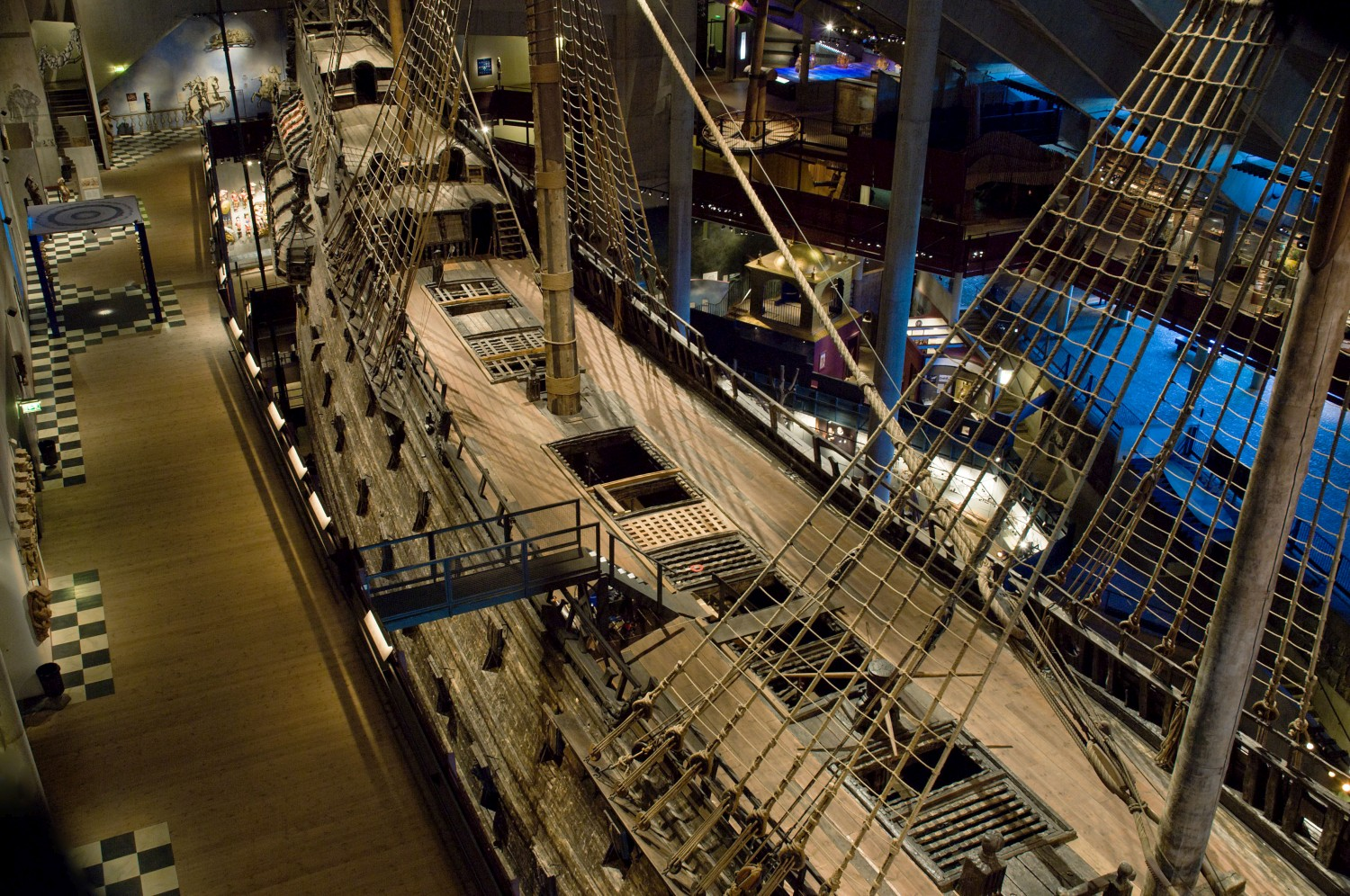
The ship in the Vasa Museum, from above. Photo: Anneli Karlsson, the Vasa Museum/SMTM.
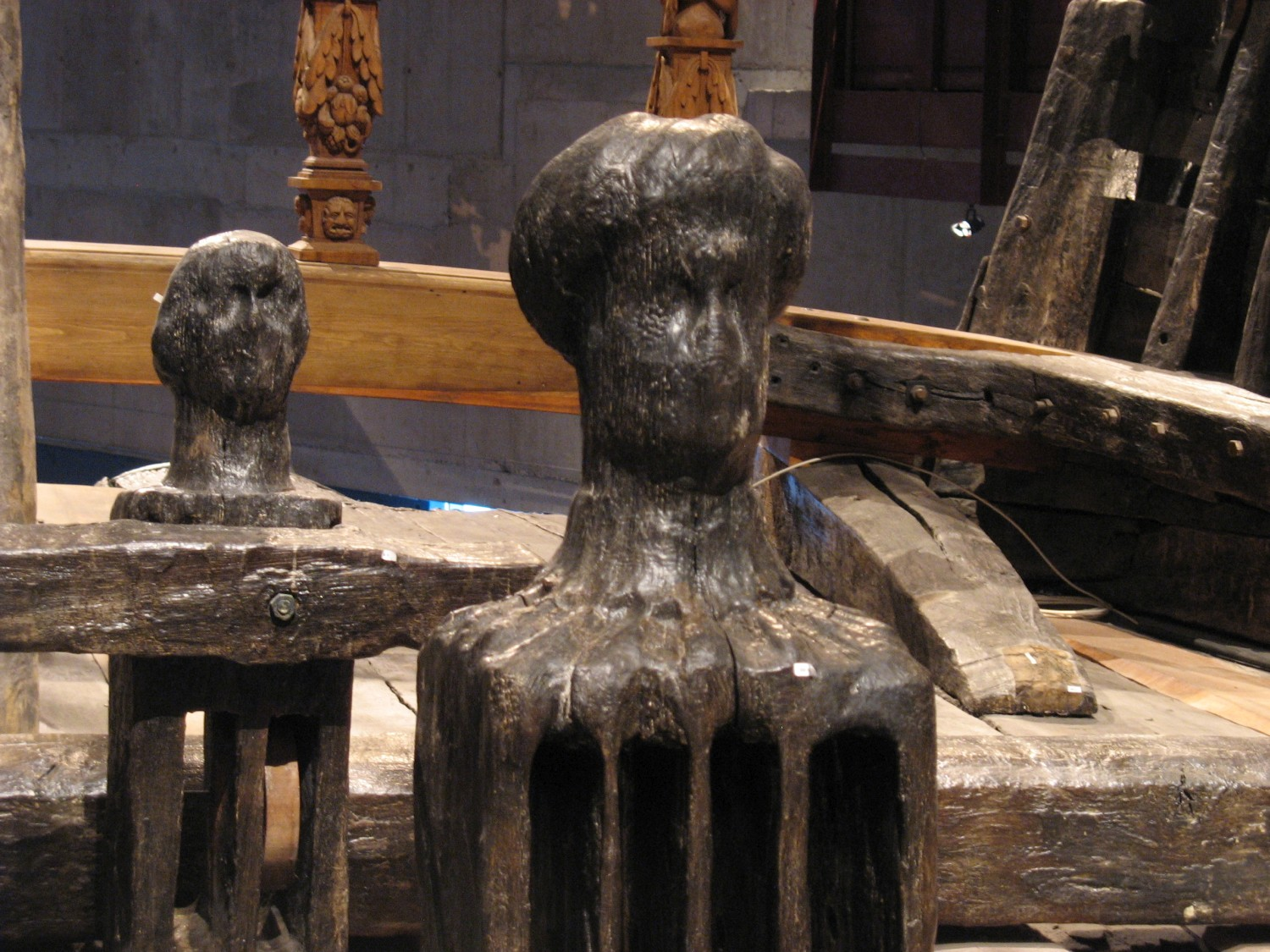
Two of the knightheads, posts used to fasten ropes, on the weather deck. The details of carved heads have been eroded almost beyond recognition by the currents of Stockholms ström. Photo: Peter Isotalo
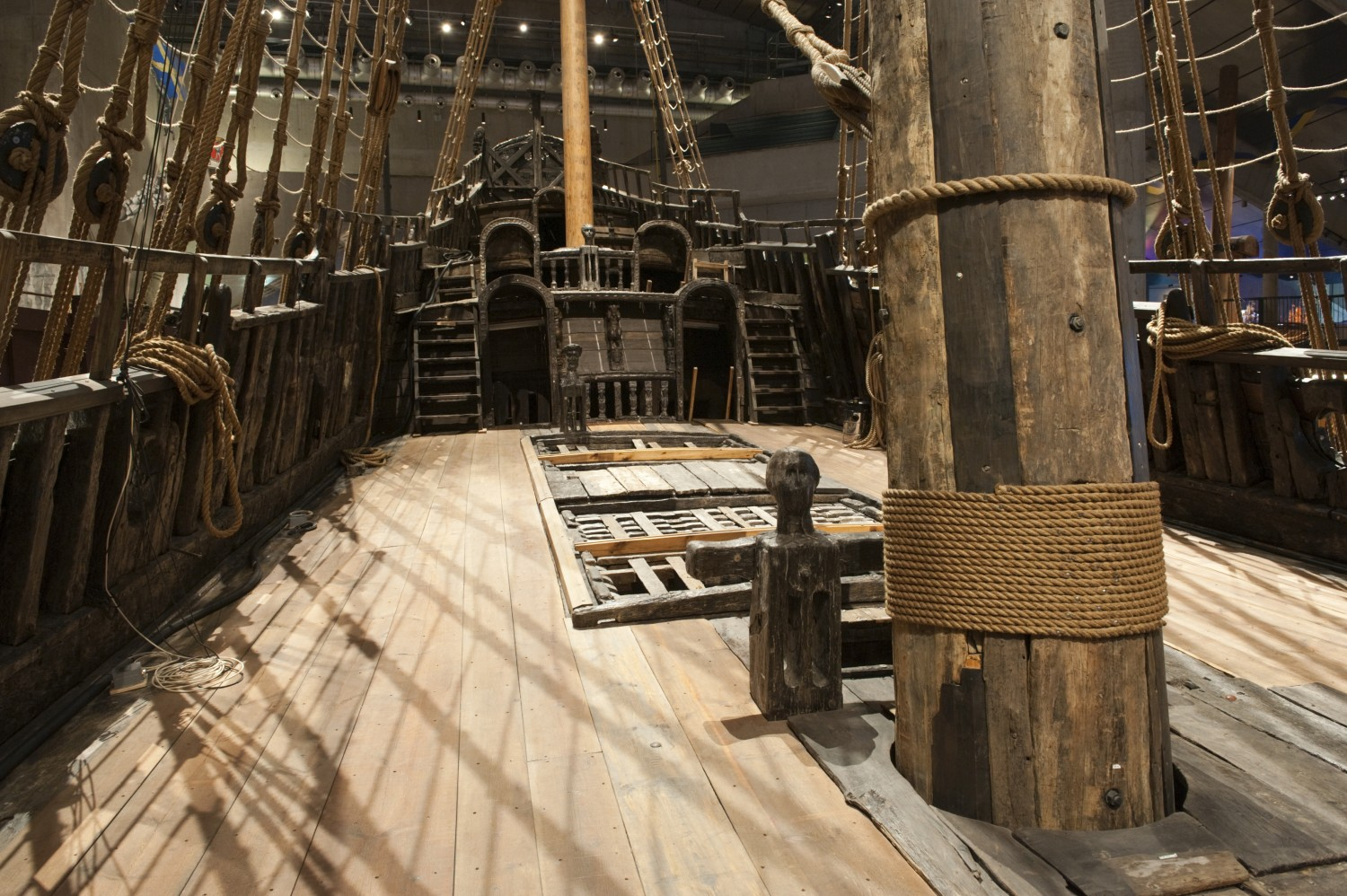
Part of the ship Vasa’s upper deck, towards the stern. Photo: Anneli Karlsson, the Vasa Museum/SMTM.
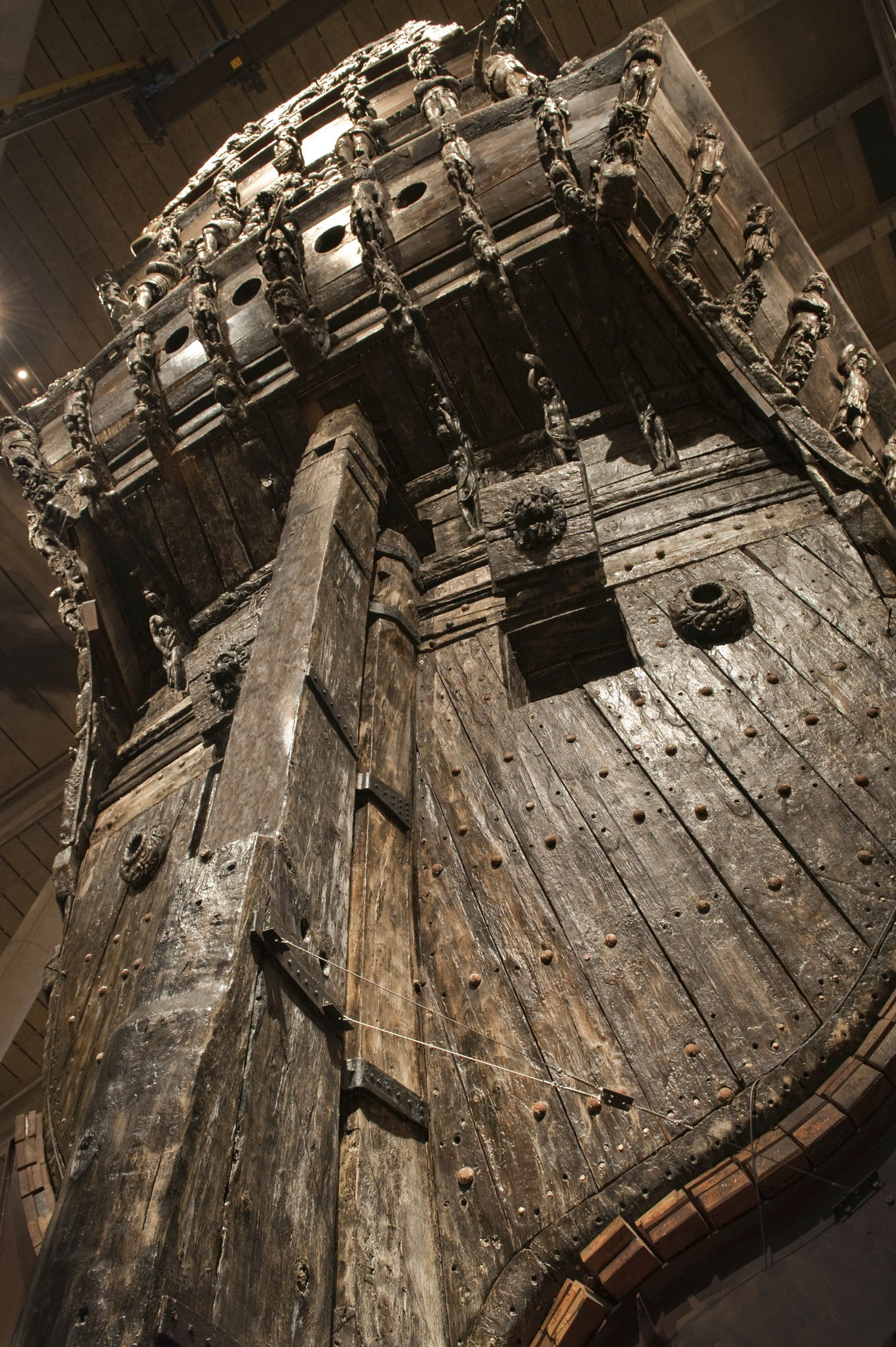
The ship Vasa’s stern, from below. Photo: Anneli Karlsson, the Vasa Museum/SMTM.
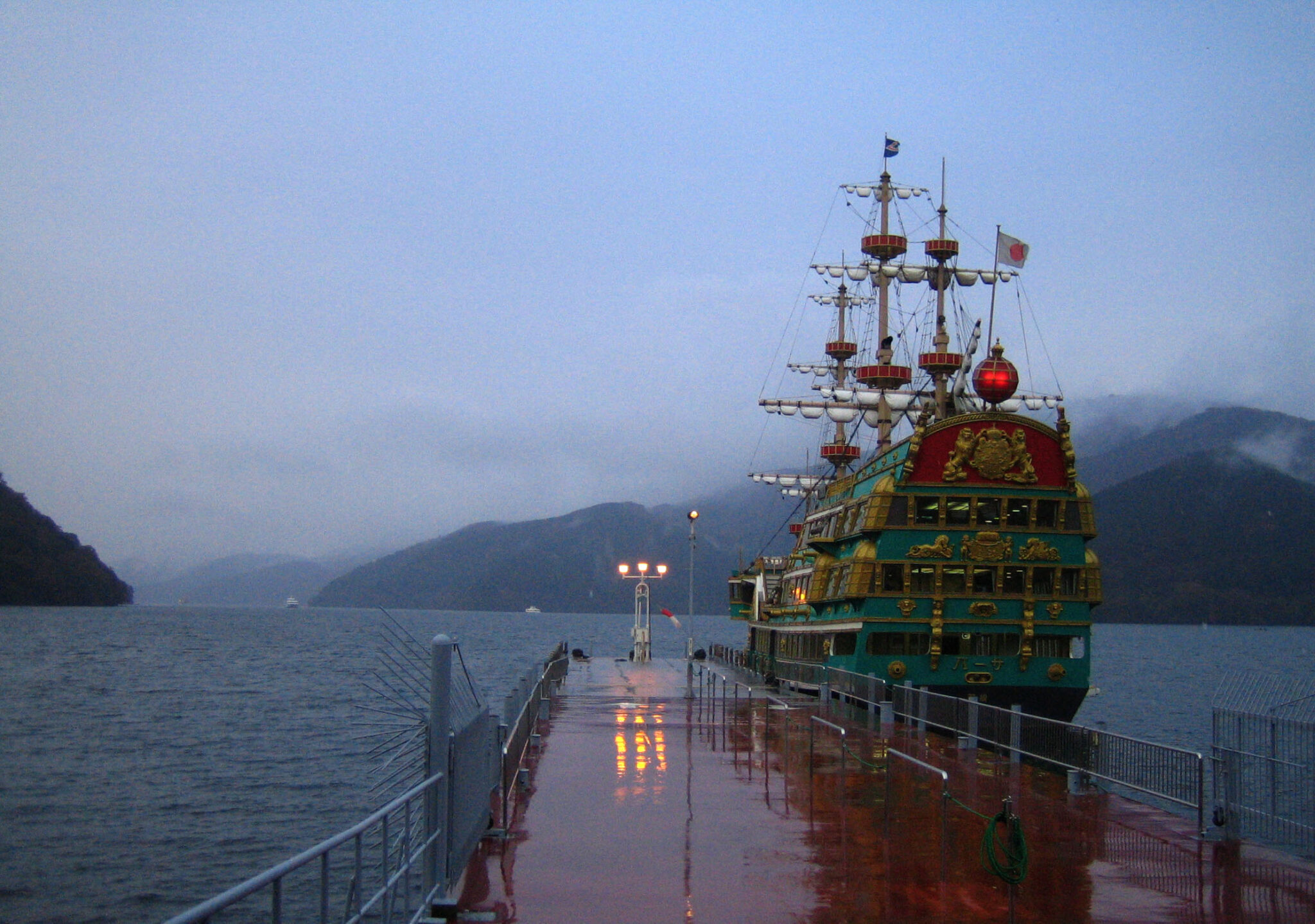
A sightseeing ship inspired by Vasa on Lake Ashi in Japan. Photo: Paul Downey
Related Post
A shocking documentary proves that mermaids do exist
SHOCKING Revelation: Thuya, Mother of Queen Tiye, Was the Grandmother of Akhenaten and Tutankhamun—What Ancient Egyptian Secrets Did She Leave Behind?
Breaking News: Astonishing Discoveries at Karahan Tepe Confirm an Extraterrestrial Civilization is Hiding on Earth, and NO ONE Knows!
Breaking News: Researchers FINALLY Discover U.S. Navy Flight 19 After 75 Years Lost in the Bermuda Triangle!
NASA’s Secret Investigation: Uncovering the Astonishing Mystery of the UFO Crash on the Mountain!
Explosive UFO Docs LEAKED: Startling Proof That Aliens Ruled Ancient Egypt!